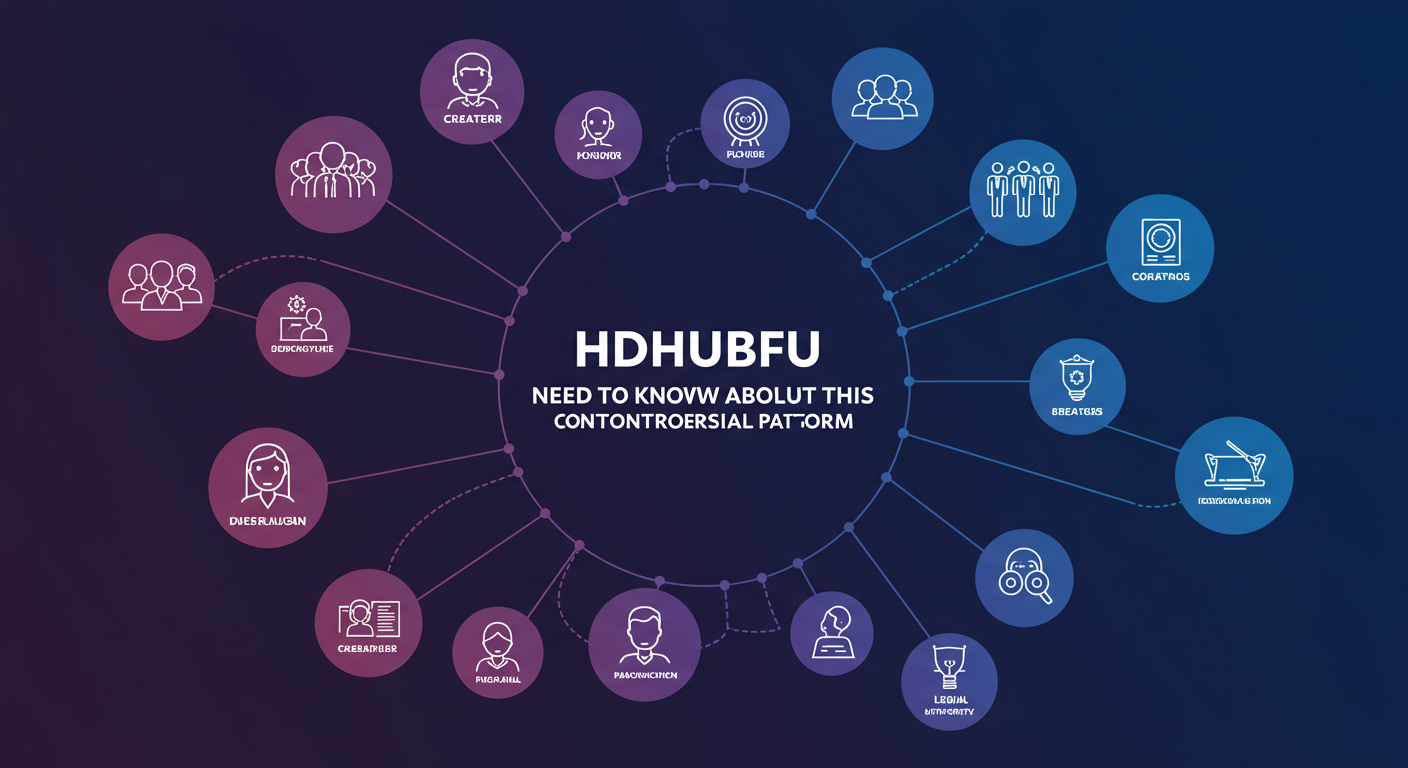In an age when entertainment is just a click away, piracy continues to thrive in the dark corners of the internet. One of the most notorious hubs for digital piracy is HDHUBFU, a shadowy platform that has become a go-to for many who seek free movies, TV shows, and even OTT-exclusive releases. But while it might seem like a convenient shortcut for viewers, there’s a lot more going on behind the scenes.
This article dives into HDHUBFU — its operations, legal status, impact on creators, and why it’s constantly under scrutiny by authorities around the world.
What is HDHUBFU?
HDHUBFU is an illegal piracy website that provides free access to copyrighted content, primarily movies and television shows. Often updated with the latest releases, sometimes within hours of official streaming or theatrical premieres, this platform thrives by exploiting gaps in digital security and copyright enforcement.
It operates by uploading pirated versions of films in various resolutions, from CAM prints to 1080p HD formats. Users can stream or download files, often hosted through third-party mirror links to avoid detection and shutdown.
The Origin and Evolution of HDHUBFU
Although the exact origins of HDHU BFUS remain shrouded in secrecy, it emerged around the early 2020s as a spinoff or mirror of other popular torrent and piracy websites like Tamilrockers, Filmyzilla, and Movierulz. What sets it apart is its rapid update cycle and wide selection of regional content, from Bollywood and Hollywood to South Indian language films.
Over time, HDHU-BFU has grown into a large repository with not just movies but also web series, dubbed versions, and leaked OTT content.
How Does HDHUBFU Work?
HDHUBFU functions by sourcing pirated content, either through camera-recorded prints or direct leaks from insiders and screeners. This content is then hosted on decentralized servers or cloud repositories. The site uses deceptive advertising tactics and malware-laced popups to monetize its traffic.
Often, mirror domains like “hdhub4u.run,” “hdh ubfu.cfd,” and others are used to bypass blocks imposed by ISPs and government agencies.
Types of Content Available on HDHUBFU
- Bollywood latest releases
- Hollywood dubbed films
- South Indian (Tamil, Telugu, Malayalam) movies
- Web series from platforms like Netflix, Prime Video, Disney+
- Dual-audio and multi-resolution versions
- Animated films and TV episodes
With such variety, the platform attracts a broad audience despite its illegal status.
Why is HDHUBFU Considered Illegal?
HDHUBFU violates international copyright laws by distributing content without permission from the rightful owners. It infringes on the intellectual property rights of filmmakers, actors, and production houses.
Most countries, including India, the U.S., and European nations, have strict digital copyright enforcement laws. Hosting, downloading, or even streaming from such a platform can attract legal action under acts like the Cinematograph Act (1952) or the Digital Millennium Copyright Act (DMCA).
The Legal Actions Taken Against HDHUBFU
Numerous complaints have been lodged against HDH-UBFU by major production companies and anti-piracy watchdogs. Some of the legal measures include:
- ISP blocks by Indian and European telecom operators
- DMCA takedown notices issued by Netflix, Amazon Prime, and others
- Domain blacklisting by cybersecurity agencies
- Crackdowns by India’s cybercrime units
Despite these, HDH UBFU often resurfaces under a new domain, making enforcement a game of digital whack-a-mole.
Risks of Using HDHUBFU
While free movies may seem attractive, using HDH-UBFU comes with significant risks:
- Legal Trouble: Downloading pirated content can lead to fines or imprisonment in some jurisdictions.
- Malware and Viruses: Many users have reported infected files and malicious ads.
- Data Theft: Unsuspecting users may have personal data or banking credentials stolen.
- ISP Monitoring: Internet providers may track and report illegal streaming activities.
What seems like a simple stream can become a cybersecurity nightmare.
Impact on Film Industry and Content Creators
HDHUBFU contributes heavily to loss of revenue in the entertainment industry. Every pirated stream or download is a potential ticket unbought or a subscription avoided. This affects:
- Box office revenue
- OTT platform subscriptions
- Jobs for cast, crew, and production staff
- Opportunities for small and indie creators
The ripple effect is damaging, especially for regional cinema that heavily depends on theatrical revenue.
How Does HDHUBFU Make Money?
It’s not charity. HDH-UBFU earns via:
- Pop-up and banner ads
- Affiliate links to shady services
- Cryptocurrency mining scripts (in some cases)
- Paid promotions for VPNs and piracy tools
In essence, while users think they’re accessing free content, they’re often being monetized in questionable ways.
Is It Ever Safe to Use HDHUBFU?
No, it’s never completely safe. Whether it’s viruses, malware, ISP tracking, or legal penalties, the risks outweigh the convenience. Even VPNs and ad blockers can’t guarantee protection.
What Does the Future Hold for Sites Like HDHUBFU?
Authorities are developing stronger AI and machine learning tools to detect and shut down piracy networks. Legal streaming is also becoming more affordable and accessible. While HDH-UBFU and its clones may persist, the window for their operations is gradually shrinking.
FAQs
Is HDHUBFU legal to use?
No. It’s an illegal piracy site. Accessing it may be considered a legal offense in many countries.
Can I get caught using HDHUBFU?
Yes. ISPs can track traffic to such websites, and legal notices or fines may be imposed in serious cases.
Does HDHUBFU contain malware?
Often, yes. Many users report virus infections or popup ads that lead to phishing sites.
What is the latest domain of HDHUBFU?
It frequently changes. Domains like hdhub4u.run or hdhu-bfu.cam are examples but are constantly banned.
How does HDHUBFU get new movies so fast?
Through insider leaks, screeners, and cam recordings uploaded within hours or days of release.
Are there any safe and legal alternatives to HDHUBFU?
Yes, platforms like Netflix, Prime Video, Disney+, and even free services like MX Player are legal and safe.
Conclusion
HDHUBFU might seem like an easy solution for accessing entertainment, but the consequences are far from harmless. From ethical concerns to cybersecurity risks, the platform operates in a gray (and often black) area of the internet. Supporting creators through legal means ensures better content, safer browsing, and a more sustainable entertainment ecosystem.

 Blog1 month ago
Blog1 month ago
 Writing2 months ago
Writing2 months ago
 News2 months ago
News2 months ago
 Tech2 months ago
Tech2 months ago
 Tech2 months ago
Tech2 months ago
 Writing2 months ago
Writing2 months ago
 Entertainment2 months ago
Entertainment2 months ago
 Apps2 months ago
Apps2 months ago



